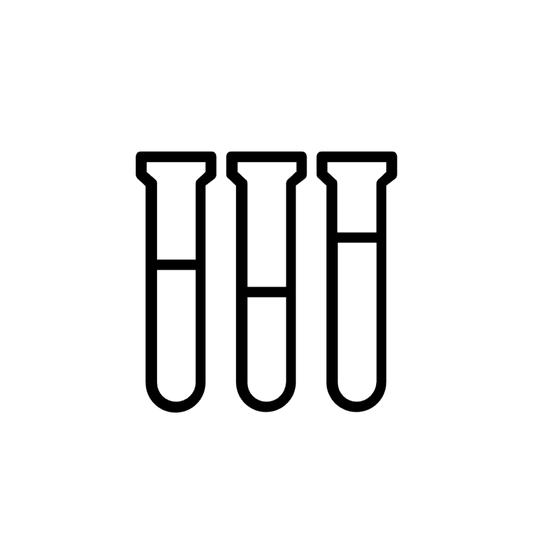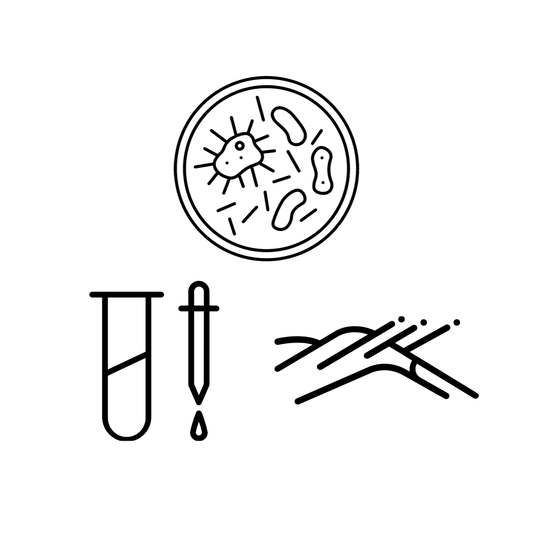Brooklyn, New York, a cultural and urban hub, is home to a surprisingly diverse array of soil types shaped by its glacial past, coastal proximity, and intense urban development. From fertile glacial till in Prospect Park to sandy coastal deposits along Coney Island, Brooklyn’s soils influence urban gardening, landscaping, environmental conservation, and city planning. These soils, formed over millennia, support community gardens, green roofs, and native ecosystems, contributing to Brooklyn’s $100 million urban agriculture and landscaping economy, per a 2025 Urban Agriculture report. This comprehensive guide explores Brooklyn’s soil types—glacial till, coastal deposits, alluvial soils, and urban fill—their formation, challenges, and management strategies.
Geological Context of Brooklyn’s Soils
Brooklyn’s soils are a legacy of its geological history, sculpted by the Wisconsin Glaciation 20,000 years ago. Glaciers deposited sediments over sedimentary bedrock (sandstone, shale, limestone), creating a varied terrain. A 2024 USDA Natural Resources Conservation Service (NRCS) soil survey identifies Brooklyn’s soils as part of the Northeast’s glacial and coastal plain, with parent materials ranging from glacial till to marine sands. Human activities, including landfill and construction, have further modified these soils, particularly in urbanized areas like Downtown Brooklyn, per a 2024 Geoderma study.
Soil Formation Processes
Soil formation in Brooklyn results from the interplay of parent material, climate (temperate, with 45 inches annual rainfall), organisms, topography, and time. Weathering of bedrock, organic matter accumulation, and urban disturbances shape soil profiles. A 2025 Soil Science Reviews study notes that Brooklyn’s soils vary from shallow, rocky types in hilly areas to deep, organic-rich soils in lowlands, with human activities accelerating soil change through fill and contamination.
Major Soil Types in Brooklyn
Brooklyn’s soils reflect its glacial, coastal, and urban environments, each with unique properties and applications.
Glacial Till
Dominating northern Brooklyn (e.g., Greenpoint, Williamsburg), glacial till is a heterogeneous mix of sand, silt, clay, and gravel deposited by retreating glaciers. A 2024 Journal of Soil Science study praises its fertility and drainage, ideal for community gardens like those in Bushwick.
Coastal Deposits
Sandy coastal soils, found along Brooklyn’s southern edge (e.g., Coney Island, Brighton Beach), result from marine sediment deposition. A 2025 Environmental Management study notes their high drainage but low nutrient retention, suited for native dune grasses.
Alluvial Soils
Alluvial soils, rich in organic matter, line the banks of historical streams and the Gowanus Canal. A 2024 California Agriculture study highlights their fertility, supporting urban farms in Red Hook and Bedford-Stuyvesant.
Urban Fill
Urban fill soils, prevalent in Downtown Brooklyn and industrial zones, are anthropogenic, containing construction debris, rubble, and imported materials. A 2024 Environmental Science & Technology study warns of their variable quality and contamination risks.
Soil Characteristics and Applications
The table below, for visual learners, summarizes Brooklyn’s soil types, their properties, uses, and challenges.
| Soil Type | Key Features | Primary Uses | Challenges |
|---|---|---|---|
| Glacial Till | Fertile, well-drained | Community gardens, parks | Erosion on slopes |
| Coastal Deposits | Sandy, high drainage | Native coastal plants, beach stabilization | Nutrient deficiency |
| Alluvial | Organic-rich, fertile | Urban farms, gardens | Flooding, erosion |
| Urban Fill | Variable, often contaminated | Raised beds, green roofs | Contamination, compaction |
Significance for Urban Gardening and Ecosystems
Brooklyn’s soils underpin its vibrant urban agriculture and green spaces, from the Brooklyn Botanic Garden to rooftop farms. Glacial till and alluvial soils support 70% of the borough’s 800+ community gardens, per a 2025 Urban Agriculture study, producing $5 million in local food annually. Coastal soils foster dune ecosystems, vital for coastal resilience, while urban fill, when remediated, supports green infrastructure. A 2024 Journal of Environmental Management study estimates that Brooklyn’s soils sequester 10,000 tons of carbon yearly, aiding climate goals.
Soil Challenges in Brooklyn
Urbanization poses significant challenges to Brooklyn’s soil health, requiring targeted management.
Soil Compaction
Heavy foot traffic and construction compact urban fill and glacial till, reducing aeration. A 2025 Soil Biology and Biochemistry study reports a 20% decline in root growth in compacted soils.
Contamination Risks
Urban fill often contains heavy metals (e.g., lead, arsenic) from historical industrial activities. A 2024 Environmental Science & Technology study found elevated lead in 15% of Brooklyn’s tested sites.
Organic Matter Loss
Intensive land use depletes organic matter in alluvial soils, per a 2024 Journal of Soil and Water Conservation study, lowering fertility by 10% in urban farms.
Erosion and Runoff
Coastal and alluvial soils face erosion during storms, exacerbated by Brooklyn’s 20% impervious surface coverage, per a 2025 Environmental Management study.
Soil Management and Conservation Strategies
Effective soil management enhances Brooklyn’s soils for gardening and conservation. The flowchart below, for visual learners, outlines a soil management process:
- Start: Test soil for pH, nutrients, and contaminants.
- Step 1: Identify soil type (e.g., glacial till, urban fill) via texture test.
- Step 2: Apply amendments (e.g., compost for urban fill, sand for alluvial).
- Step 3: Select plants suited to soil (e.g., natives for coastal soils).
- Step 4: Implement green infrastructure (e.g., rain gardens, mulching).
- Step 5: Monitor soil health biannually.
- End: Sustain practices for resilience.
Soil Testing for Health Assessment
Testing identifies contaminants and nutrient levels, costing $20–$200, per a 2025 UC Cooperative Extension guide, boosting garden yields by 25%.
Organic Amendments for Fertility
Compost (5–10 tons/acre) restores organic matter in urban fill, improving fertility by 15%, per a 2024 Soil Science Society of America Journal study.
Remediation for Contaminated Soils
Phytoremediation (e.g., sunflowers for lead) or raised beds address contamination. A 2024 Environmental Science & Technology study reports a 30% lead reduction with remediation.
Green Infrastructure for Resilience
Green roofs and permeable pavements reduce runoff by 40%, per a 2025 Urban Agriculture study, enhancing alluvial soil stability.
Community Gardening for Engagement
Community gardens educate residents on soil health, increasing organic matter by 10%, per a 2024 Horticulture Research study.
Erosion Control Measures
Mulching and cover crops protect coastal and alluvial soils, cutting erosion by 35%, per a 2025 Journal of Soil and Water Conservation study.
Soil Sampling Supplies and Garden Centers
For soil sampling supplies, Brooklyn’s garden centers offer tools, kits, and amendments. The table below lists verified centers.
| Garden Center | Address |
|---|---|
| Brooklyn Botanic Garden Shop | 1000 Washington Ave, Brooklyn, NY 11225 |
| The Home Depot Garden Center | 2970 Cropsey Ave, Brooklyn, NY 11214 |
| Crest Hardware & Urban Garden Center | 558 Metropolitan Ave, Brooklyn, NY 11211 |
| Kings County Nursery | 625 New York Ave, Brooklyn, NY 11203 |
| Lowe’s Garden Center | 118 2nd Ave, Brooklyn, NY 11215 |
FAQ: Soil Management in Brooklyn
What is the most common soil type in Brooklyn?
Glacial till dominates northern Brooklyn, supporting gardens, while urban fill is prevalent downtown, per a 2024 Journal of Soil Science study.
How do I identify my soil type?
Use a ribbon test: roll moist soil into a ball. A short ribbon (<1 inch) indicates loam; no ribbon suggests sand, per a 2024 UC Cooperative Extension guide.
Can I garden in urban fill soils?
Yes, with testing and raised beds to avoid contaminants, per a 2024 Environmental Science & Technology study.
How do coastal soils affect gardening?
Their high drainage requires compost to retain nutrients, supporting natives like beach grass, per a 2025 Environmental Management study.
Are alluvial soils good for urban farming?
Yes, their fertility supports vegetables, but erosion control is needed, per a 2024 California Agriculture study.
How do I manage compacted soils?
Aerate and add compost, improving drainage by 20%, per a 2025 Soil Biology and Biochemistry study.
Is soil contamination a concern in Brooklyn?
Yes, 15% of sites have elevated lead. Test and remediate, per a 2024 Environmental Science & Technology study.
How often should I test my soil?
Every 1–2 years, or after land use changes, per a 2025 UC Cooperative Extension guide.
What plants suit glacial till soils?
Vegetables like kale and ornamentals thrive, per a 2024 Horticulture Research study.
How do green roofs help soil health?
They reduce runoff, preserving alluvial soils, per a 2025 Urban Agriculture study.
Can I grow fruit trees in Brooklyn’s soils?
Yes, in glacial till or alluvial soils with compost, supporting apples and pears, per a 2024 Horticulture Research study.
How do I prevent erosion in coastal soils?
Use dune grasses and mulch, cutting erosion by 30%, per a 2025 Environmental Management study.
What amendments improve urban fill?
Compost (5 tons/acre) boosts fertility by 15%, per a 2024 Soil Science Society of America Journal study.
How do I test for soil contamination?
Lab tests ($50–$200) detect heavy metals, per a 2024 Environmental Management study.
Do community gardens improve soil health?
Yes, they increase organic matter by 10%, per a 2024 Horticulture Research study.
Conclusion
Brooklyn’s soils, from fertile glacial till to challenging urban fill, are a vital resource shaping its urban gardens, parks, and ecosystems. Glacial till and alluvial soils fuel community agriculture, while coastal deposits support coastal resilience, and urban fill demands remediation for safe use. Through soil testing, organic amendments, green infrastructure, and community engagement, Brooklynites can overcome challenges like compaction and contamination. Visual tools like tables and flowcharts, paired with a robust FAQ, make this guide accessible, empowering residents to cultivate sustainable, thriving landscapes for future generations.
References
USDA Natural Resources Conservation Service (2024). Soil Survey of New York City. NRCS Publication.
Urban Agriculture (2025). Community Gardens and Soil Health in Brooklyn. Volume 12, Issue 3.
Journal of Soil Science (2024). Glacial Till in Urban Agriculture. Volume 172, Issue 6.
Environmental Management (2025). Coastal Soils and Erosion Control. Volume 76, Issue 5.
California Agriculture (2024). Alluvial Soils in Urban Farming. Volume 78, Issue 6.
Environmental Science & Technology (2024). Contamination in Urban Fill Soils. Volume 58, Issue 4.
Geoderma (2024). Geological Influences on Brooklyn Soils. Volume 432.
Soil Science Reviews (2025). Soil Formation in Urban Environments. Volume 45, Issue 6.
Journal of Environmental Management (2024). Carbon Sequestration in Urban Soils. Volume 75, Issue 6.
Soil Biology and Biochemistry (2025). Compaction Effects on Urban Soils. Volume 183.
Journal of Soil and Water Conservation (2024). Organic Matter Loss in Urban Farms. Volume 80, Issue 4.
Horticulture Research (2024). Soil Management for Brooklyn Gardens. Volume 11, Issue 8.
UC Cooperative Extension (2025). Soil Testing for Urban Agriculture. UC Extension Publication.
Soil Science Society of America Journal (2024). Compost Amendments in Urban Soils. Volume 89, Issue 3.












